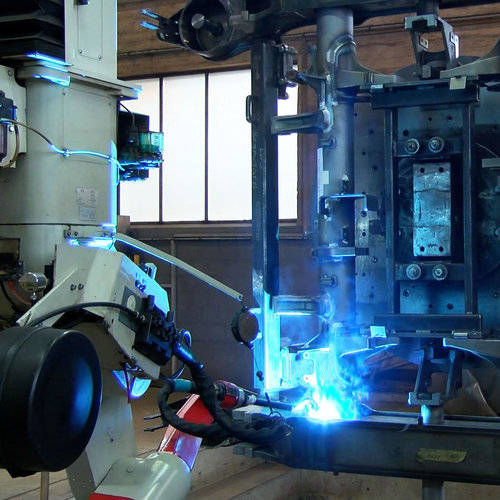Stick
TIG
MIG
FCAW
You can find multiple names used for the same process in welding given that they have grown to be commonly accepted slang terms. It does not matter everything you call it, as long as you understand those are the same. Let me explain.
Stick welding is a slang term for “Shielded Metal Arc Welding” and it is commonly abbreviated, or referred to, as “SMAW”. The slang term originates from the rod which is used because it’s looks like a stick. This is the procedure that utilizes a source of energy who makes constant amperage to generate an arc. Such a welder runs on the rod, or electrode, metallic having a flux coating externally that protects the weld area in the air even though the rod is burning. SMAW is usually utilized in area of which is an operating welding procedure that is affordable, is very rewarding on many metals, and permits welding thick materials. This makes it an excellent joining process for many industrial construction needs. SMAW is additionally the most basic kind of welding which is taught inside the tastes schools as foundation to learning other sorts of metal joining processes.
TIG welding, or TIG, is definitely an abbreviation for “Tungsten Inert Gas” but its proper name is “Gas Tungsten Arc Welding” commonly abbreviated and referred to as “GTAW”. In older times, previously even be known as “HeliArc”. GTAW is often a joining technology which uses a constant current energy the same as Stick welding. What changes could be the way filler metal is deposited to the joint. TIG runs on the torch that has a little bit of tungsten to make an arc. The torch also has shielding gas flowing through it to guard the weld area from air. Characteristics of tungsten allow arc temperatures to reach over 10,000 degrees Fahrenheit. The way TIG works is that the arc is produced along with filler metal is put into the joint. Filler metals with this process can be found in wire form and are simply cut to length. The most frequently used shielding gas is Argon, that is utilized for welding a lot more than 90 % of metals. TIG welding is utilized for welding exotic metals or anywhere that needs excellent welds. This technique is among the hardest types of welding to master.

MIG welding, or MIG, is an abbreviation for “Metal Inert Gas” that’s more formally generally known as “Gas Metal Arc Welding” or “GMAW”. The word MIG comes from the main shielding gasses used which were the inert, or Nobel, gasses. Today the gases used vary, therefore the name has officially been changed to “Gas Metal Arc Welding”. MIG welding will be the slang term which is commonly accepted. Additionally it is generally known as “Wire Wheel Welding”. This process works on the wire feed to feed solid filler wire for the weld joint. The wire feed is connected to a consistent voltage power that can cause the arc to melt the wire when it hits the weld joint. Ahead of the wire creates an arc there needs to be a shielding gas feed over the system. MIG welding is conducted by having a MIG gun that mixes the wire, electricity and shielding gasses all concurrently. The MIG gun has a trigger that, once squeezed, starts the metal joining process. This method is regarded as semi-automatic as the filler metal is continuously feed towards the weld joint. This metal joining process is usually utilized in factories where high production is necessary. MIG is not hard to use but starting the apparatus might be troublesome for the less experienced operator.
FCAW, or “Flux Cored Arc Welding”, is technically considered a different type of welding process. The truth is that FCAW can be a different kind of electrode or filler wire found in a MIG welding machine. The electrode is a hollow tube containing flux within the center. What this will is permit the electrode to weld without the need for a shielding gas. There are 2 varieties of electrodes utilized in FCAW; self shielding and dual shielding. Self can be an electrode that does not need any shielding gas. It is rather much like a Stick welding electrode turned back to front. What this does is allow welding in windy conditions. The problem of MIG welding is that wind or drafts cause welding defects. A self shielding FCAW electrode solves that problem. Dual shielding electrodes need shielding gas to operate properly. The advantage of this kind of electrode is the quantity of weld it could deposit. FCAW is commonly found in shipyards or anywhere that has to have plenty of welding to be done on thick metals.
There are many more different types of welding that are used. Some examples are:
Oxy Acetylene
Lasers
Brazing
Soldering
Plasma
SAW or “Submerged Arc Welding”
Friction
Plastic
Electron Beam
Explosive
Thermite
Forge
Ultra Sonic
And the list proceeds! Ultimately essentially the most commonly used processes are Stick, TIG, MIG and FCAW. Necessities such as processes that have become popular as they are what industry needs. They produce welds starting from mass production to x-ray quality.
For more information about robotic welding please visit web site: read.
